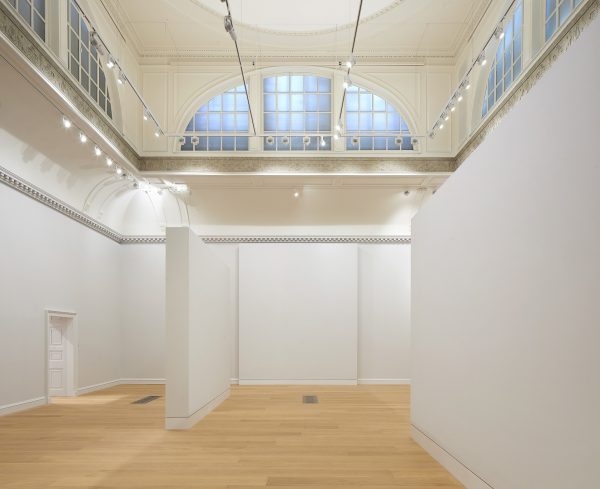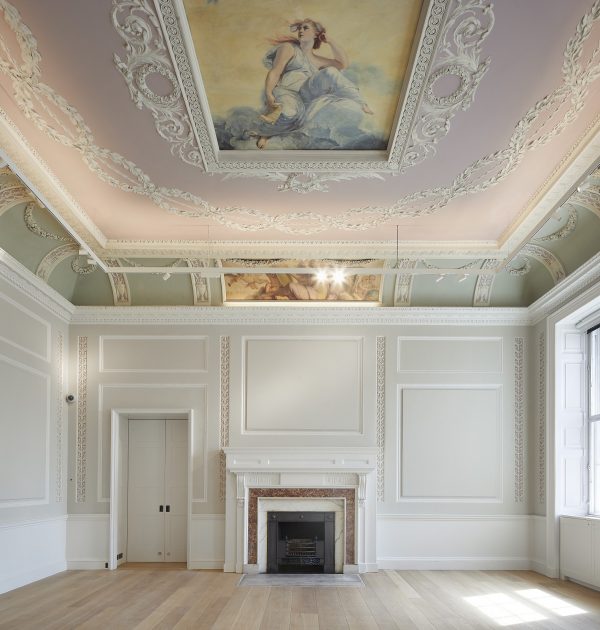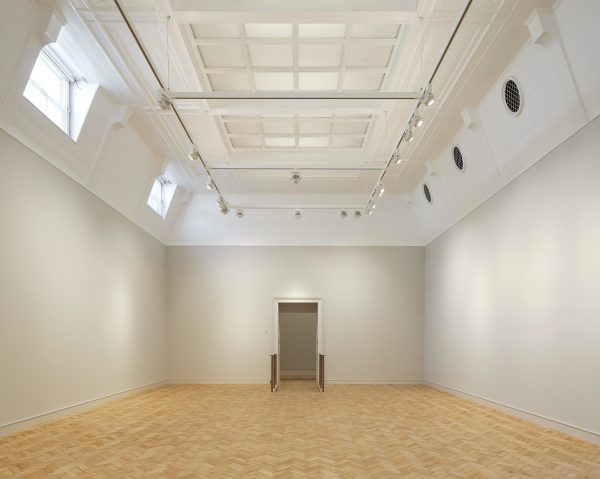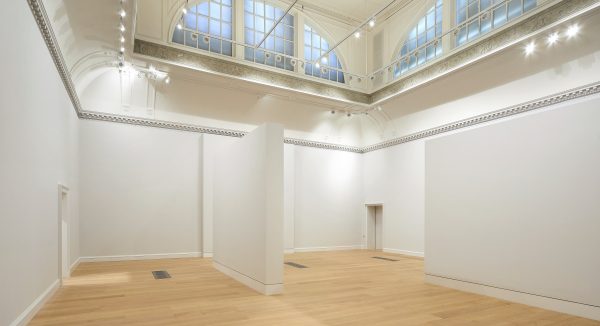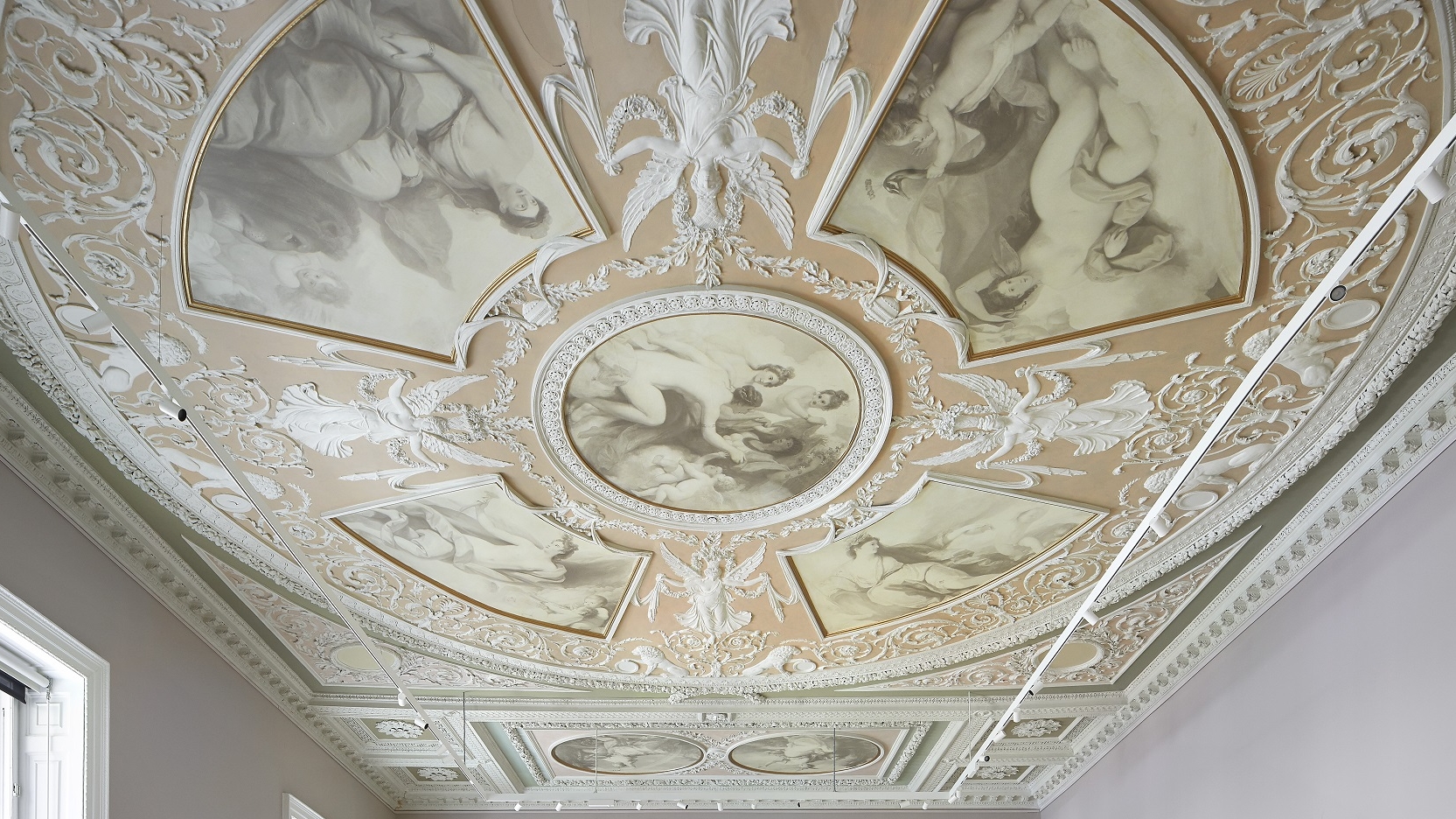
News Archive 2021
The Courtauld Gallery to reopen in November 2021
The Courtauld Gallery in London will open its doors in November 2021 following the most significant modernisation project in its history, providing a transformed home for one of the UK’s greatest art collections.
The Courtauld’s much-loved collection, which belongs to the Samuel Courtauld Trust and ranges from the Middle Ages to the 20th century – will be completely redisplayed and reinterpreted. These enhanced spaces will allow The Courtauld to give visitors greater insight into its collections, teaching and research and enable inspiring encounters with its great works of art. In addition, two brand new galleries will provide a beautiful new home for The Courtauld’s acclaimed programme of temporary exhibitions.
Masterpieces from The Courtauld’s world-famous collection of Impressionist and Post-Impressionist art by Cézanne, Manet, Van Gogh, Gauguin, Renoir, and Monet will be reunited in the spectacularly restored LVMH Great Room – London’s oldest purpose-built exhibition space and the largest space in Somerset House.
The new displays will reveal the quality and range of the collection like never before. The Blavatnik Fine Rooms, spanning the Piano Nobile across the whole of the second floor, will provide the stunning setting for a series of new displays of works from the Renaissance to the 18th century. A new space will be dedicated to The Courtauld’s important collection of Medieval and Early Renaissance paintings and decorative arts.
Rooms devoted to 20th century art and the Bloomsbury Group will showcase lesser-known areas of the collection through rotating displays. A new Project Space on the second floor will provide a flexible platform for spotlighting smaller temporary projects that give visitors special insights into The Courtauld’s collection, conservation and research. Displays in this space will play an important role in better connecting the public with the institution’s work as an internationally-renowned centre for the study of art history and conservation.
The largest work in The Courtauld’s collection – Austrian Expressionist Oskar Kokoschka’s epic triptych The Myth of Prometheus (1950) – will be back on public display for the first time in over a decade in the Katja and Nicolai Tangen 20th Century Gallery.
A new large-scale painting by acclaimed artist Cecily Brown, specially commissioned for the curved wall of The Courtauld’s historic 18th century staircase, will be unveiled when the Gallery reopens.
The Lord Browne of Madingley, Chairman of The Courtauld, said: “The opening of The Courtauld Gallery will be one of the biggest cultural highlights of 2021 and a significant first step in the transformation of The Courtauld. We are thrilled to be welcoming the public back to enjoy one of the country’s greatest art collections in a beautifully restored setting. This transformation would not have been possible without the generosity of our donors, to whom we are immensely grateful. The redevelopment allows us to showcase the range and richness of the collection as never before, and to enable a greater number of people to enjoy close personal encounters with some of the finest works of art from the Middle Ages to the 20th century. This will be complemented by an exciting opening programme of exhibitions, which focus on new or little-known areas of The Courtauld’s collection.”
As well as the redisplayed permanent collection, The Courtauld Gallery will open with three temporary exhibitions included in the ticket price:
Modern Drawings: The Karshan Gift (Nov 21 – Jan 22) will showcase an outstanding group of modern drawings by European and American masters including Georg Baselitz, Joseph Beuys, Wassily Kandinsky, Paul Klee, Gerhard Richter, Louis Soutter and Cy Twombly, assembled by the late collector Howard Karshan and generously given to The Courtauld by his wife, the artist Linda Karshan.
Pen to Brush: British Drawings and Watercolours (Nov 21 – Jan 22) will show a wide range of works from The Courtauld’s remarkable collection of British drawings – from one of the earliest and smallest works in the collection, a pen and ink drawing by Isaac Oliver measuring 47 x 59 mm, to watercolours by J.M.W. Turner and John Constable, to modern works, including a shelter drawing by Henry Moore and the radical, near abstract Vorticist Composition with Figures by Helen Saunders.
Kurdistan in the 1940s (Nov 21 – May 22) will unearth some of the treasures of the Conway photographic Library including sites damaged or destroyed in recent conflict through the works of 20th century British photographer Anthony Kersting, one of the most prolific and widely travelled architectural photographers of his generation.
Designed by Stirling Prize-winning architects Witherford Watson Mann, the redevelopment revitalises and opens up the building in Somerset House conceived by Sir William Chambers in the 1770s, restoring it to its former grandeur and creating state-of-the-art facilities. The project has been supported by £11 million from The National Lottery Heritage Fund and generous donations from foundations, individuals and other supporters.
Watch our film
Courtauld reopening highlights
Restored and expanded galleries showcasing treasures from the Medieval period and Early Renaissance to the 20th century, including the restored Blavatnik Fine Rooms
Thanks to the generous donation of £10 million from philanthropists Sir Leonard and Lady Blavatnik, and the Blavatnik Family Foundation, the elegantly restored Blavatnik Fine Rooms, a suite of six galleries spanning the entire second floor of the building, will showcase some of the greatest and most-loved works from The Courtauld’s collection from the Renaissance through to the 18th century. The redevelopment will enable The Courtauld to give a more generous account of this part of its collection across rooms dedicated to the Italian Renaissance, Northern Renaissance, 17th and 18th century Europe. A major highlight will be Botticelli’s large-scale The Trinity With Saints – the only altarpiece by the artist in the UK – unveiled after a three-year conservation project. A room dedicated to The Courtauld’s celebrated collection of works by Peter Paul Rubens will also be a significant feature of the displays. New lighting and other improvements throughout these historic spaces will transform the experience of the collection.
Sir Leonard Blavatnik said: “My wife and I are delighted to support the historic renovation of The Courtauld, including the Blavatnik Fine Rooms. We congratulate all those associated with the project, a unique addition to London and the world of the fine arts.”
A new gallery has been created on the first floor to present The Courtauld’s important collection of paintings and decorative arts from the Medieval and Early Renaissance periods, including fine examples of Islamic metalwork, alongside works from Italy and Northern Europe
For the first time, The Courtauld’s significant collection of works by the Bloomsbury Group will be given a dedicated space in the Gallery, showcasing the group’s radical designs for furniture, ceramics and textiles alongside paintings and drawings by important Bloomsbury artists, including Vanessa Bell and Duncan Grant.
A spectacular new home for the UK’s greatest collection of Impressionist art
Masterpieces from The Courtauld’s world-renowned collection of Impressionist and Post-Impressionist paintings, including Manet’s A Bar at the Folies-Bergère (1882), Van Gogh’s Self-Portrait with Bandaged Ear (1889), and the most significant collection of works by Cézanne in the UK, will be shown together when The Courtauld Gallery reopens in the spectacularly restored LVMH Great Room – London’s oldest purpose-built exhibition space.
Previously subdivided, the newly renamed LVMH Great Room has been reinstated to its original breath-taking proportions and volume. It will provide an unforgettable new home for The Courtauld’s Impressionist and Post-Impressionist treasures, which will be rehung and newly interpreted. It will include masterpieces by Manet, Monet, Renoir, Degas, Seurat, Van Gogh, Gauguin and Modigliani
Among the works on display will be Renoir’s Spring, Chatou (1873), a rarely seen Impressionist masterpiece once belonging to Samuel Courtauld and now on loan to the Gallery. Also on display will be one of the most important artist manuscripts ever to enter a UK public collection, Gauguin’s Avant et après (Before and After), a 213-page illustrated memoir featuring numerous drawings and prints revealing important insights into Gauguin’s life and work. It was acquired for The Courtauld through the UK Government’s Acceptance in Lieu Scheme in 2020 and goes on public display for the first time.
The Courtauld would like to acknowledge the generosity of LVMH Moët Hennessy – Louis Vuitton who have enabled the transformation of the historic LVMH Great Room.
Jean-Paul Claverie, Advisor to the Chairman, LMVH/Moët Hennessy – Louis Vuitton and Head of LVMH Philanthropy, said : “LVMH is delighted and proud to have supported the renovation of the magnificent Great Room in London, which has played such an important historical role in the arts. The LVMH Great Room has been reunited with its glorious past, providing an inspiring and uplifting space where visitors can enjoy The Courtauld’s unparalleled collection of French Impressionist and Post-Impressionist masterpieces. We hope that it will delight visitors from around the world.”
The largest work in The Courtauld’s collection on show for the first time in over a decade
An epic modern painting by the great Austrian Expressionist Oskar Kokoschka consisting of three canvases measuring over eight metres long, and considered to be one of the artist’s most important works, will be displayed at The Courtauld for the first time in over a decade in the Katja and Nicolai Tangen 20th Century Gallery.
The Myth of Prometheus (1950) was commissioned in 1950 by Count Antoine Seilern, one of The Courtauld’s most important benefactors, for the ceiling of his London home. Seilern bequeathed the triptych to The Courtauld, together with his remarkable collection of Old Master paintings and drawings. Kokoschka painted the work in London in 1950, at a time when the world was poised between the Second World War and the beginning of the Cold War, retelling stories from classical myth and the Bible to evoke dramatic scenes of apocalypse and the hope of regeneration during troubled times.
The painting will be exhibited alongside a selection of photographs documenting Kokoschka working on The Myth of Prometheus in Seilern’s home, taken by the acclaimed 20th century photographer Lee Miller.
The Courtauld would like to thank the AKO Foundation, whose generous donation has supported the creation of the Katja and Nicolai Tangen 20th Century Gallery.
Remarkable gift of 24 modern drawings including works by Kandinsky, Klee, Baselitz and Richter exhibited together for the first time
An outstanding group of modern drawings by European and American masters including Georg Baselitz, Joseph Beuys, Wassily Kandinsky, Paul Klee, Gerhard Richter, Louis Soutter and Cy Twombly, assembled by the late collector Howard Karshan and generously gifted to The Courtauld by his wife Linda, will go on public display together for the first time when The Courtauld Gallery reopens. The group of 24 works on paper will be unveiled in the new exhibition galleries on the top floor, formed by the removal of former attic apartments to enable The Courtauld to develop its celebrated programme of international loan exhibitions. One of the most significant gifts of art to The Courtauld in a generation, the Karshan gift will transform the collection by extending its major historical holdings fully into the twentieth century. Aside from Cézanne, none of the artists included in the gift has previously been represented in the collection.
Major new commission by Cecily Brown for The Courtauld’s historic staircase
A new large-scale painting by the renowned contemporary artist Cecily Brown will be unveiled as part of the reopening displays. The work has been specially commissioned for the curved wall at the top of The Courtauld’s historical staircase and will reflect Cecily Brown’s deep interest in the paintings in the Gallery’s collection. The commission revisits the early history of the building. In the eighteenth century, a painting by Giovanni Battista Cipriani occupied this same location when this part of Somerset House was home to the Royal Academy of Arts. The commission has been supported by The Garcia Family Foundation.
British drawings celebrated in dedicated Drawings Gallery
Pen to Brush, the opening display in the dedicated Gilbert and Ildiko Butler Drawings Gallery, will feature highlights from The Courtauld’s remarkable collection of British drawings and watercolours. They range from one of the earliest and smallest works in the collection, a pen and ink drawing by Isaac Oliver measuring just 47 x 59 mm (around 1565-1617), to Henry Moore’s powerful wartime Shelter Drawing (1942). Works from the ‘golden age’ of British watercolour include examples by J.M.W. Turner, John Constable and Edward Dayes’ panoramic view of Somerset House from the Thames. A highlight will be a little-known abstract drawing, Vorticist Composition with Figures, Black and White (1915), by Helen Saunders, one of only two female members of the early 20th century avant-garde Vorticist group.
Rarely seen images of Kurdistan in the 1940s by Britain’s leading architectural photographer Anthony Kersting
20th century British photographer Anthony Kersting, the most prolific and widely travelled architectural photographer of his generation, will be the subject of the inaugural display in the new Project Space when The Courtauld Gallery reopens. Born in South London in 1916, Kersting documented his extensive travels across the Middle East throughout the 1940s and 50s. His archive of over 42,000 photographic prints and negatives were given to the Conway Library at The Courtauld upon his death in 2008. 20 compelling photographs from the collection documenting the life of the Yazidi community in Kurdistan, taken by Kersting on a trip in 1944, will go on display when The Courtauld Gallery reopens. The exhibition also includes portraits and city photography of Erbil, often considered the oldest continually inhabited place on earth, and the Mosque at Nebi Yunus, the burial place of Jonah destroyed by Isis in 2014. The display will be the first to be presented in the Gallery’s new Project Space, a new room to spotlight smaller temporary projects that give visitors insight into The Courtauld’s broader teaching, conservation and research expertise.
The 1.1million photographs in the Conway Library – most of which have never been seen by the public – are currently undergoing a major volunteer-led digitisation project – supported by the National Lottery Heritage Fund – which will put these images, including Kersting’s, into the public domain.
Increasing the accessibility of the collection
The project has worked closely with the historic building to introduce improvements such as step-free access to the entrance, changes in display cabinet height, and standardising floor levels between rooms – making The Courtauld Gallery more accessible than ever before. A highlight will be the spacious, newly created visitor welcome areas, which provide greatly improved facilities and include The John Browne Entrance Hall, which has been generously supported by the John Browne Charitable Trust.
In addition, the collection’s interpretation has been completely revisited, drawing on The Courtauld’s expertise in art history education and research, as well as exploring the history of the fascinating rooms in which the collection is based. Supported by Bloomberg Philanthropies, the Gallery’s digital programme will also be expanded, engaging new audiences and enhancing access to our collections.
Professor Deborah Swallow, Märit Rausing Director of The Courtauld, said: “The Courtauld was founded in 1932 on the belief that everyone should have the opportunity to engage with art. This major redevelopment has provided a unique opportunity to look at the collection afresh, and it provides new narratives and new ways of enjoying our works. Fresh design and interpretation throughout the gallery will open up The Courtauld as never before, enabling more people than ever to discover and enjoy our outstanding collection – furthering The Courtauld’s mission to advance how we see and understand the visual arts. Object Study Rooms and the Project Space will also provide a unique environment for The Courtauld’s teaching and research work. We look forward to welcoming people back to The Courtauld Gallery from November 2021.”
The Courtauld will launch a guide on the Bloomberg Connects app, a free digital guide to cultural organisations around the world. Bloomberg Connects makes it easy to access and engage with arts and culture from mobile devices, anytime, anywhere. Features include expert commentary, video highlights, pinch-and-zoom capability and exhibition and way-finding maps which will extend access to The Courtauld Gallery for all upon reopening. The Bloomberg Connects is free via Apple Store or Google Play.
Additional major support has been provided by the Deborah Loeb Brice Foundation, Crankstart, The Garcia Family Foundation, The Garfield Weston Foundation, Dr Martin and Susanne Halusa, The Linbury Trust and Oak Foundation. The Courtauld is most grateful to these visionary supporters, alongside others who are making this project and its related activities possible. The Arts & Humanities Research Council Capabilities for Collections Fund (CapCo) has also made an important investment to upgrade critical art conservation instruments and support the infrastructure development essential to further care of The Courtauld’s world-class collections. The Courtauld would also like to thank McQueens Flowers for their support of Sculpture and Decorative Arts at The Courtauld, including Illuminating Objects.
